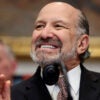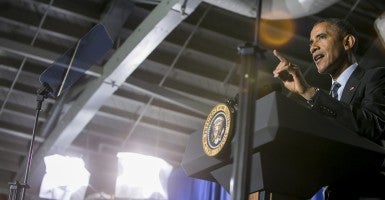It’s true, economic projections are just that—projections. But overly optimistic economic projections, such as those contained in the president’s recently released 2016 budget proposal, can do more harm than good.
The fact that economic projections will inevitably miss the mark to some degree or another does not render them useless. Just because investors cannot perfectly predict future stock prices does not mean they shouldn’t examine companies’ fundamentals and make informed investment choices.
Likewise, the federal government should use all available resources to generate informed estimates for the future path of the economy. After all, a lot is riding on the economy. Economic growth has a huge effect on tax revenues and government spending, and on a personal level, it impacts job opportunities, wages and prices.
Unfortunately, the administration appears to be, once again, forecasting rosy economic assumptions—as opposed to less optimistic economic assumptions such as those of the Congressional Budget Office—so that the damaging impacts of the president’s big-government policies won’t appear quite so bad.
Compared to the Congressional Budget Office’s projections for the 2016-2025 period, the president’s budget assumes:
- Nearly 8 percent higher annual growth in real GDP
- A 6 percent lower average rate of unemployment
- Lower average inflation by 6 percent
- Lower average interest rates by between 1.5 and 3 percent
These comparatively rosier economic assumptions are dangerous because they create a more favorable economic foundation that makes the president’s proposed policies appear less detrimental—even favorable—to the United States’ bleak fiscal outlook.
The president’s stimulus is a perfect example of using rosy economic assumptions to implement detrimental economic policies. The administration projected that its nearly trillion-dollar stimulus package would prevent the unemployment rate from ever rising above 7.9 percent, yet the stimulus passed and the unemployment rate soared to 10 percent.
It’s time for the administration to stop hiding behind overly-optimistic economic projections and instead recognize the toll that big-government and big-spending policies have taken on the still-recovering economy.































